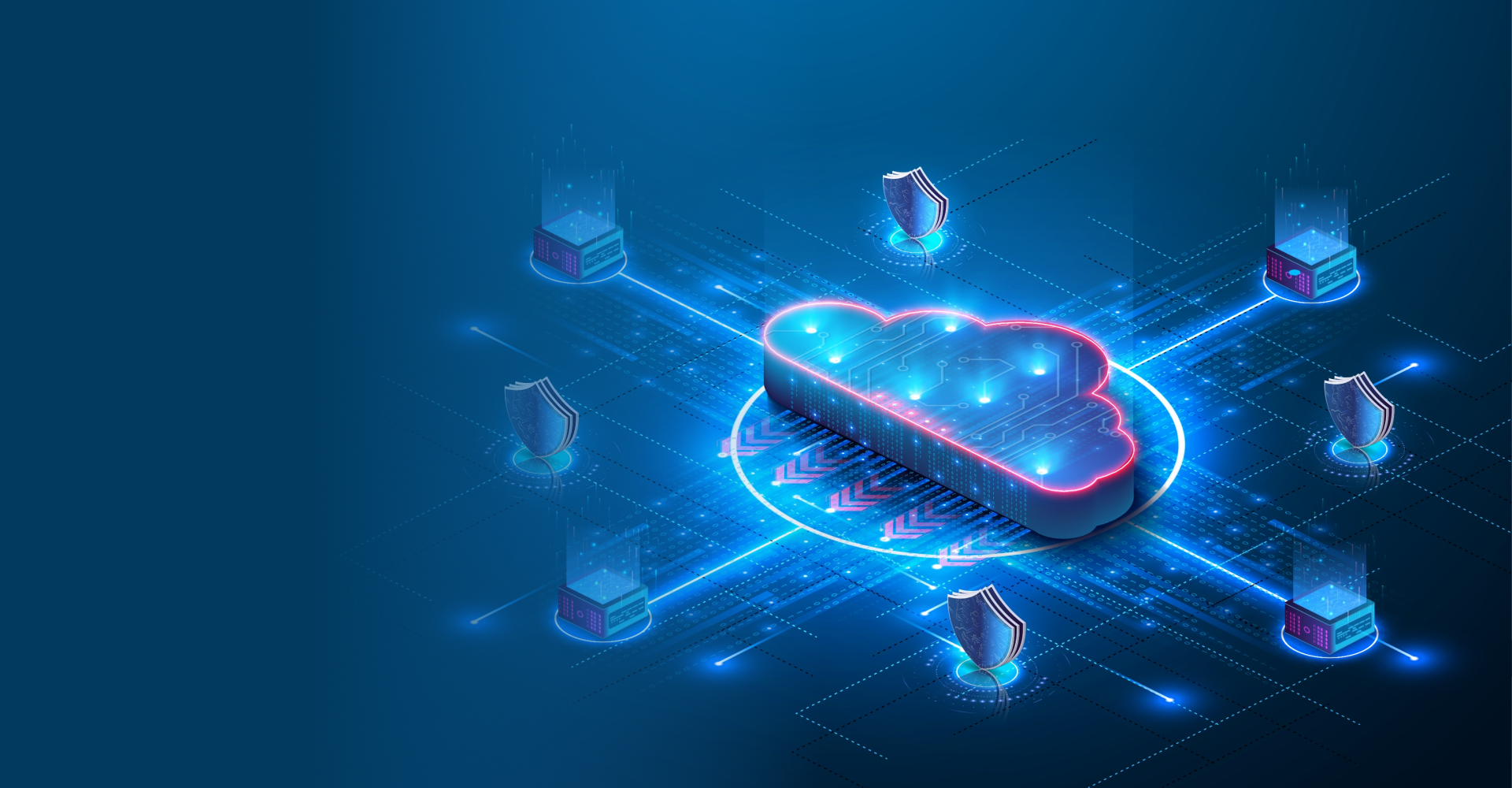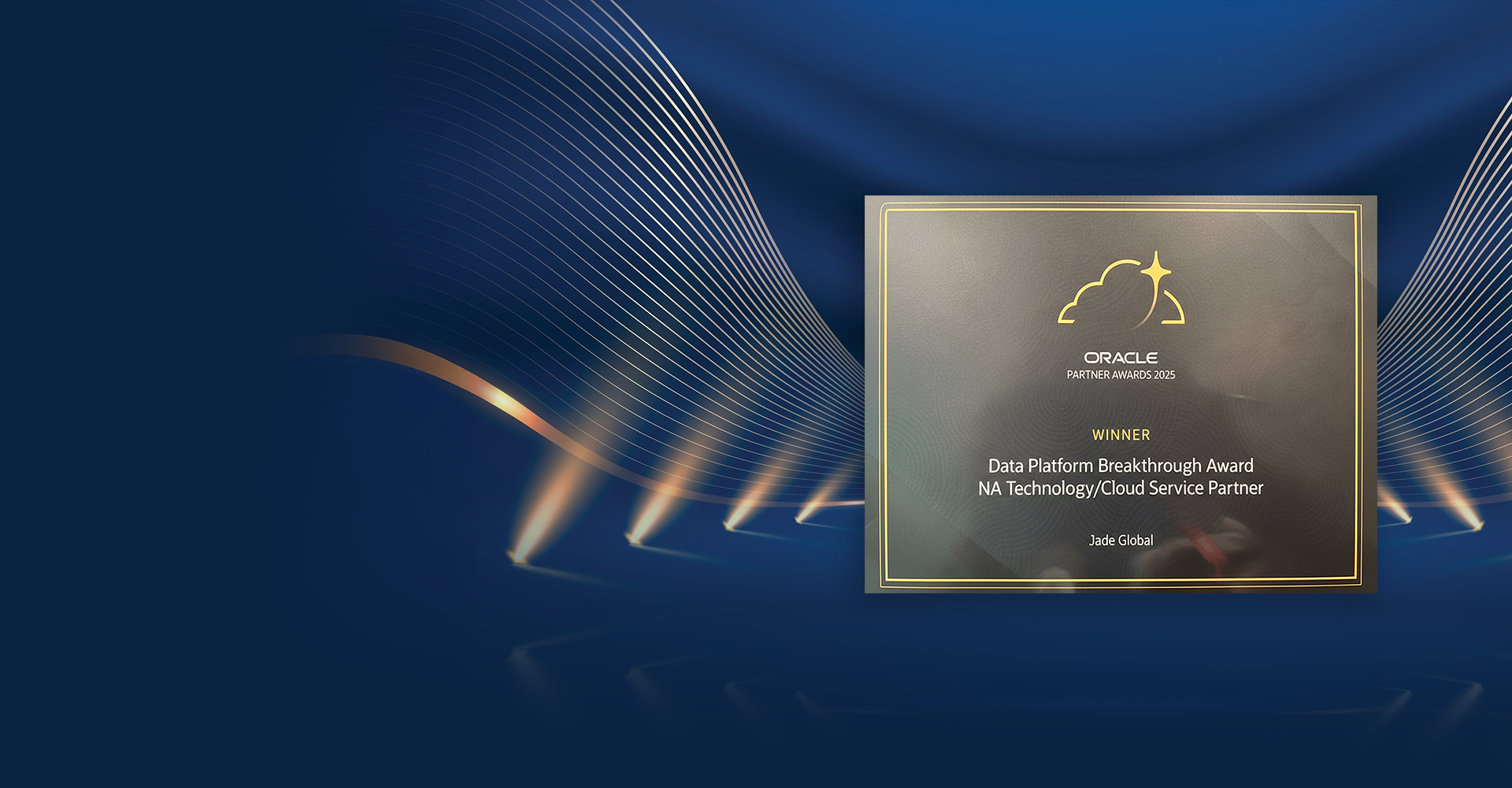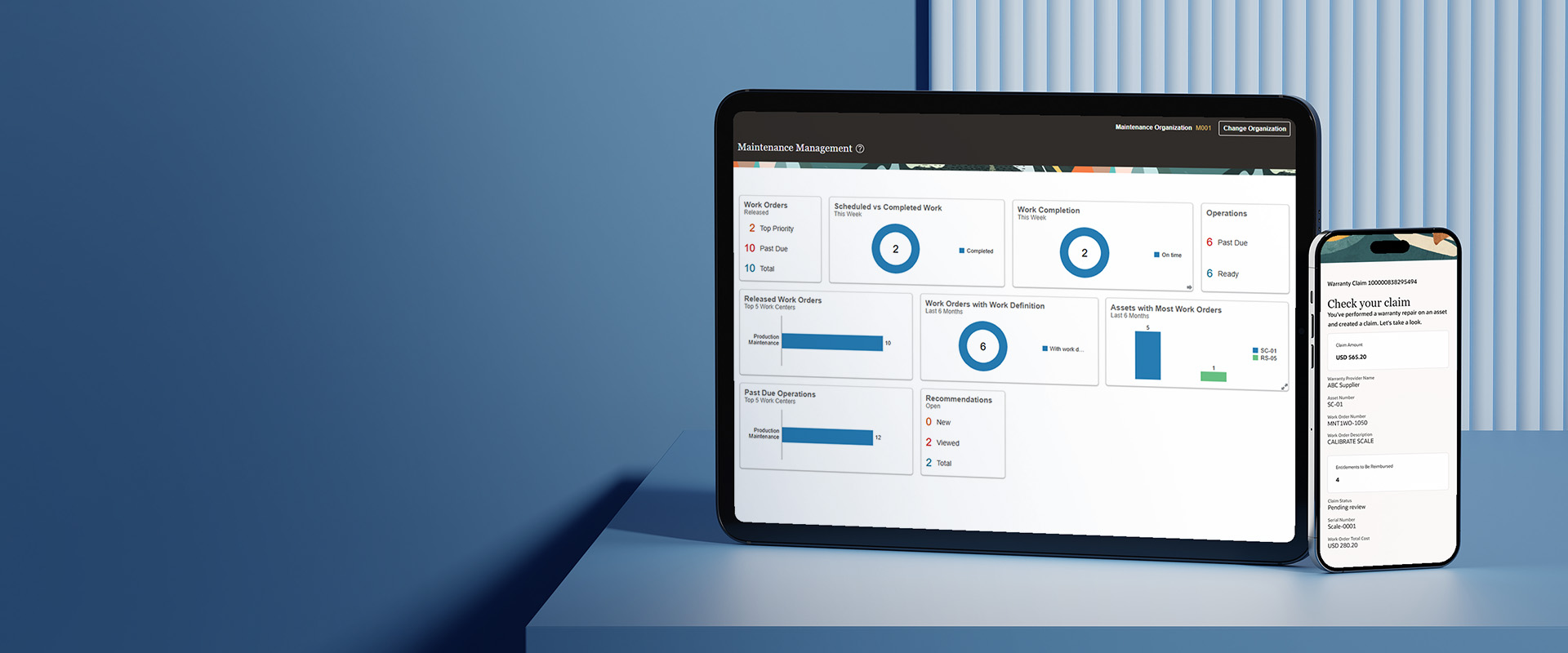“Procure-to-Pay,” referred to as “P2P,” encompasses the entire set of steps that a company or an organization performs when it procures goods or services from a vendor. Goods or Services mentioned here could mean raw materials, professional services, stationery, infrastructure, or any other miscellaneous expenses. The events include creating requisitions, purchasing, receiving, submitting payments, and accounting for goods and services. It covers the whole process from the point of order to payment and accounts.
It is important to know how the P2P cycle is essential for the functioning of a business and exactly how it works and the importance of each stage. Being unaware of the exact steps can lead to confusion and frustration when working on troubleshooting errors related to the P2P process.
This blog gives you a heads-up on the P2P cycle in Oracle Cloud Fusion. Here we explain what it is, how it works, and some critical tables.
What is the P2P cycle in Oracle Cloud Fusion and its Usage?
The P2P cycle in Oracle Cloud Fusion is a process that starts with a requisition being created in Oracle Procurement and ends with the supplier being paid fully or partially for the purchase. You should complete several steps for the cycle to be complete. The steps are outlined in the diagram below:
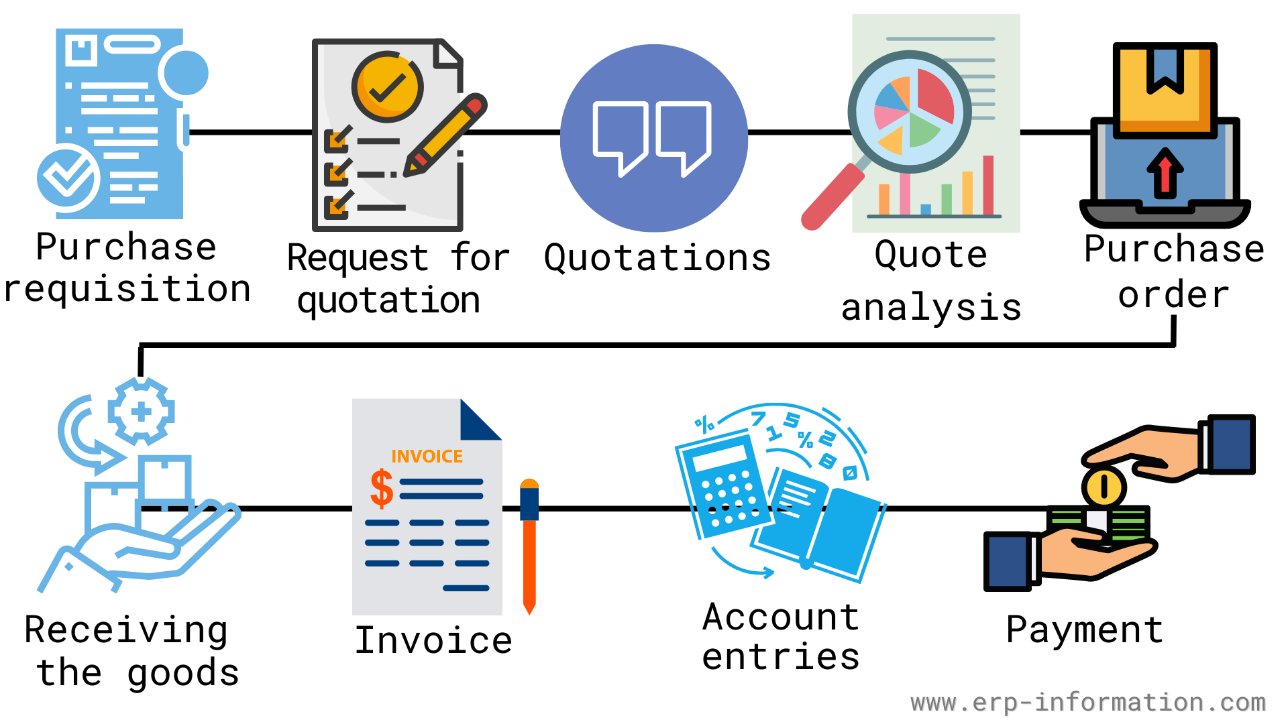
Critical steps in the P2P cycle in Oracle Fusion with Tables
Request for Quotation (RFQ)
Quotations
Quote Analysis
Creating a Purchase Order
Receiving Goods/Services
Creating an Invoice
Creating Account Entries
Supplier Payment
Here we take a look at each of these steps below:
1. Creating a Purchase Requisition
The first step that initiates the Procure-to-Pay Cycle is Creating a Purchase Requisition (PR). A requisition is a formal document used when an employee needs to purchase or order something on behalf of their organization. In Oracle Cloud Fusion, an employee (or a user) creates a PR by navigating to the “Procurements” à “Purchase Requisitions” à “Enter Requisition Line” screen in Oracle Cloud Fusion Work Area.
As shown in the screenshot below, the requisition form must be filled out. The requisition must include all the required fields like the item description, part number, date, quantity, and price.
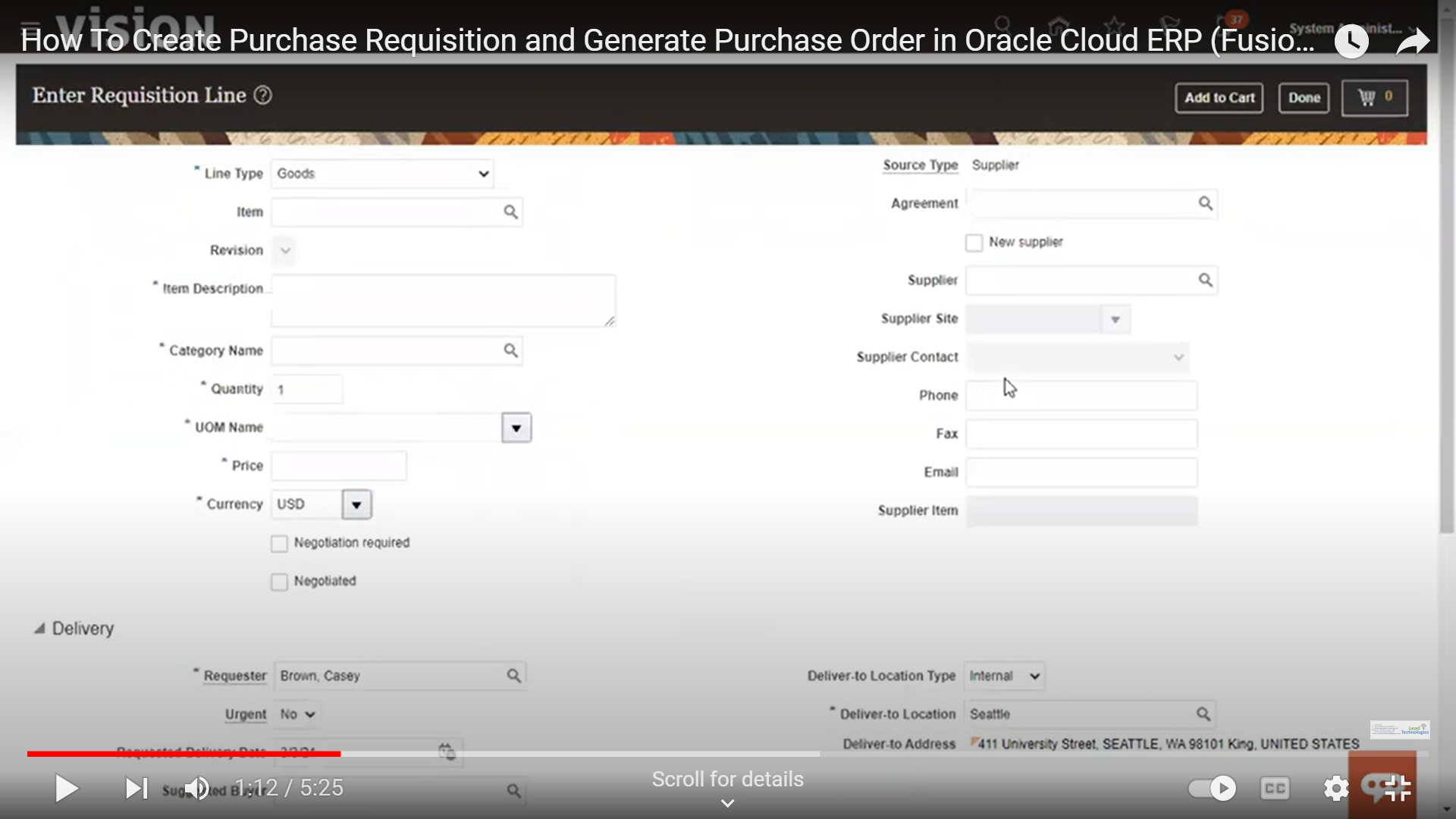
2. Request for quotation
After requisitions are created by entering all the information mentioned above, the user generates a request for a quotation (RFQ). An RFQ is a Call for Bid, or an Invitation for Bid sent by a company to its potential suppliers.
An RFQ is a document sent to the supplier that outlines the goods or services needed, along with the buyer’s price. The RFQ also includes any other terms and conditions relevant to the purchase.
3. Quotations
A quote is an offer that contains the total price of the products or services.
The supplier sends a quotation, whether in response to an RFQ or not, through the Purchasing Documents Open Interface. If you don’t receive quotes electronically from your supplier, a quotation can be created manually using a Quotations Form or copying the quotation from an existing RFQ.
4. Quote analysis
Quote Analysis is a process in which the quotations received are then viewed and approved. In this process, Purchasing allows you to review or approve quotation information for an item or a category.
Users approve the quotations if they want buyers or requestors to reference the quotations on POs or requisitions.
Quote analysis enables users to review the supplier’s quotation and ensure that it meets all the buyer’s requirements.
5. Creating a purchase order
After a quotation is approved, Purchasing allows you to generate a Purchase Order (PO), a legal document outlining the terms of sale.
The PO document includes the price, quantity, and need-by date of the goods or services, it also includes any other relevant terms and conditions associated with the purchase. When you create a PO (either manually or by Auto-Creating from requisitions), the Supplier Item Catalog form can be used to fetch quotation information. Additionally, the PO, which can be divided into PO header and PO lines sections, includes details like Ship To location, supplier information, distribution accounts, and purchasing parameters.
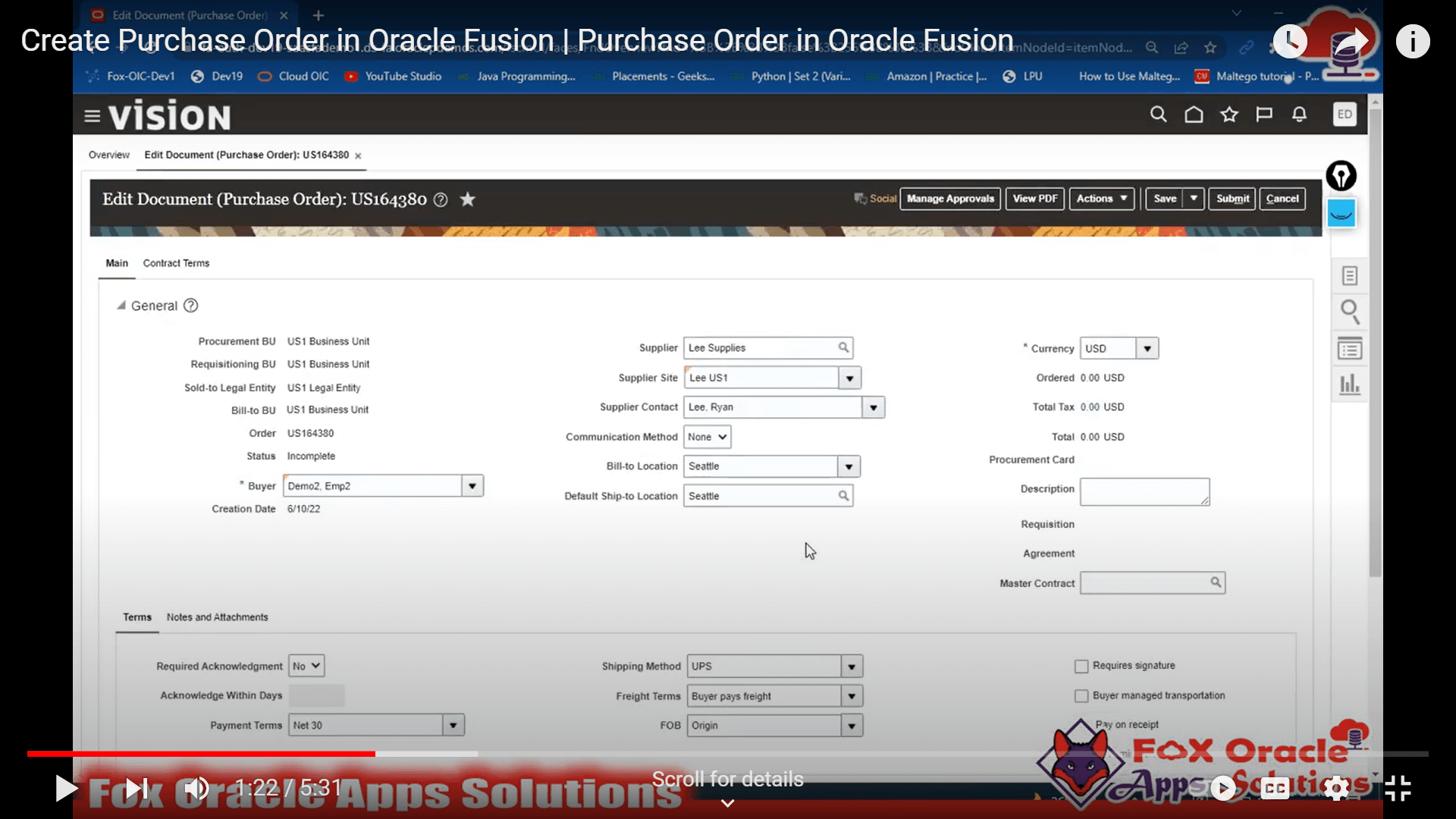
POs are created, saved, and then submitted for approval internally within the organization.
Once approved, the PO document is generated with amount and delivery requirements and then transmitted to the vendor for fulfilment.
6. Receiving the goods or services
Once the goods/services are ordered and shipped by the vendor, they must go to their final destination. The receipt is done by entering quantity (accepted quantity) and/or receiving location into the receiving form in Oracle Purchasing.
Creating receipts and records of goods arriving at the distribution center into the warehouse system. The supplier delivers the goods or services, and the relevant receiving details are entered, with line items verified to ensure that everything ordered has been delivered.
The receiving form will include fields for the supplier, like ship-to address, and delivery date. This is completed once all the information has been entered.
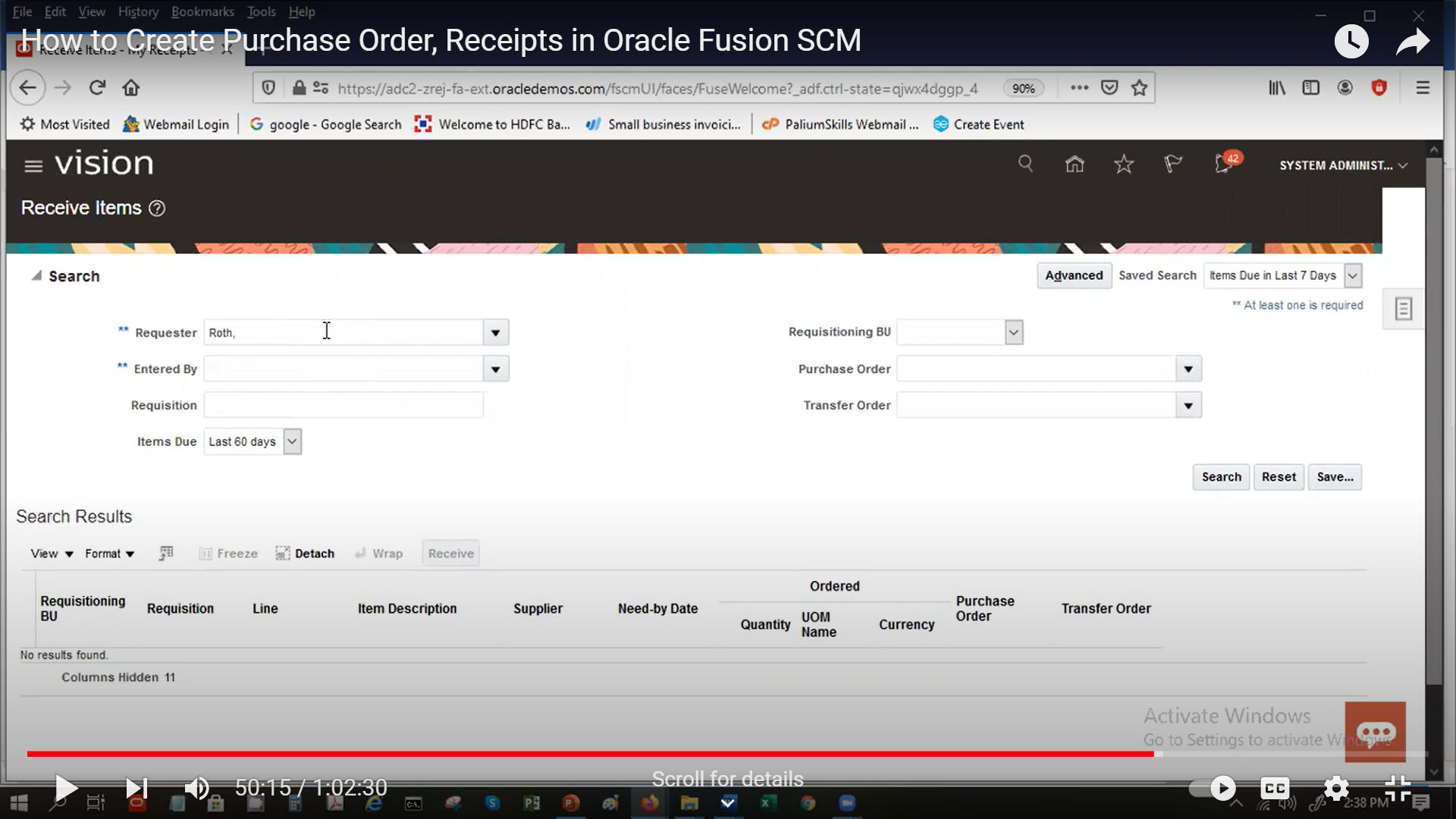
7. Creating an invoice
Once the receipt is entered, the invoice can be created in Oracle. An invoice specifies the price of the goods or services and any other terms, and an essential aspect of the invoice includes a due date for payment.
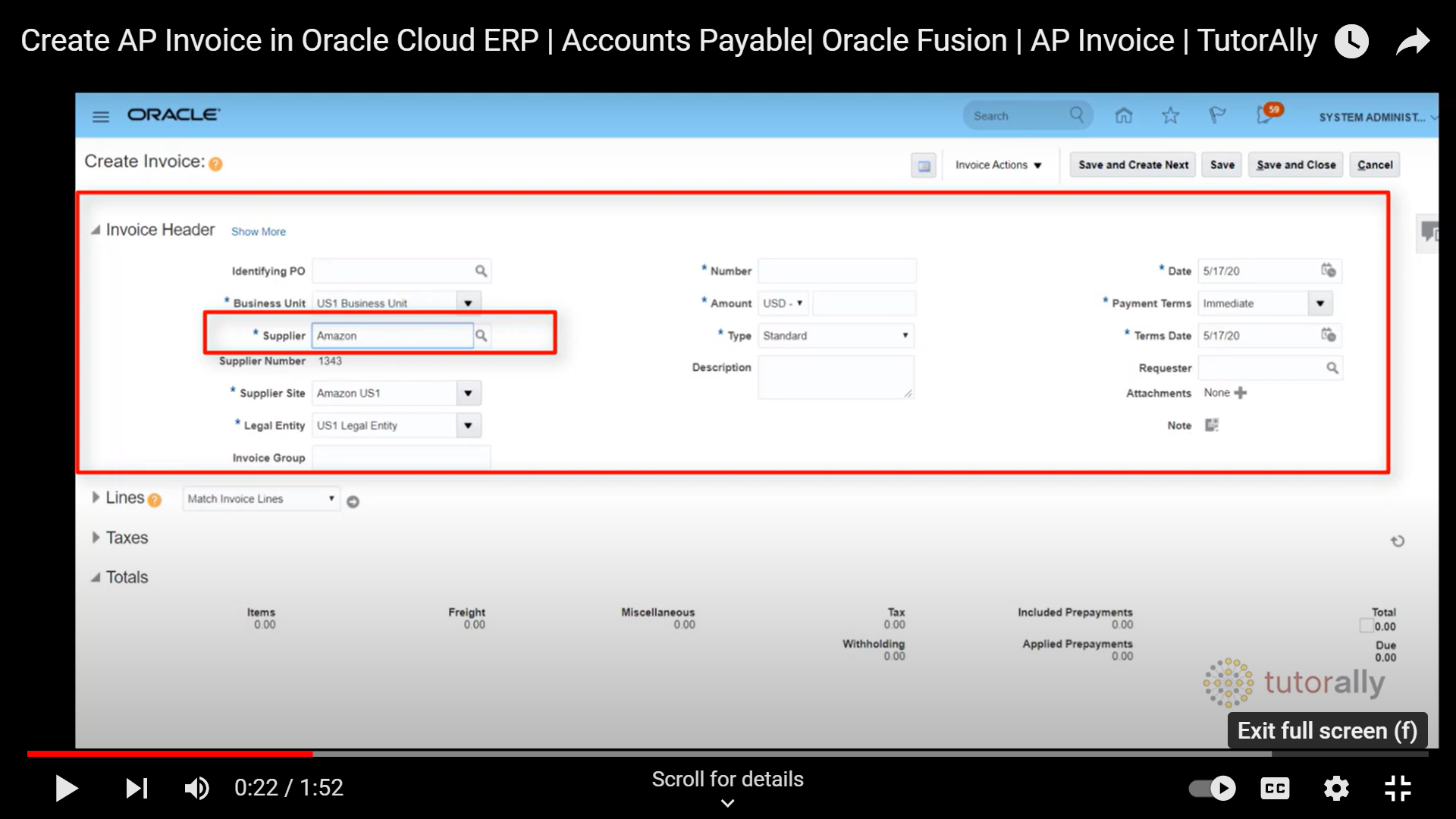
8. Create accounting entries
The invoice which is created and approved needs to be reviewed. This step is known as invoice validation, wherein the invoice is checked and validated. The supplier’s invoice is matched and ensures it aligns with the PO created earlier.
After Invoice validation and approval, the Accounts Payables team generates accounting entries. These accounting entries debit from the Accounts Payable Account and credit into the Cash Account.
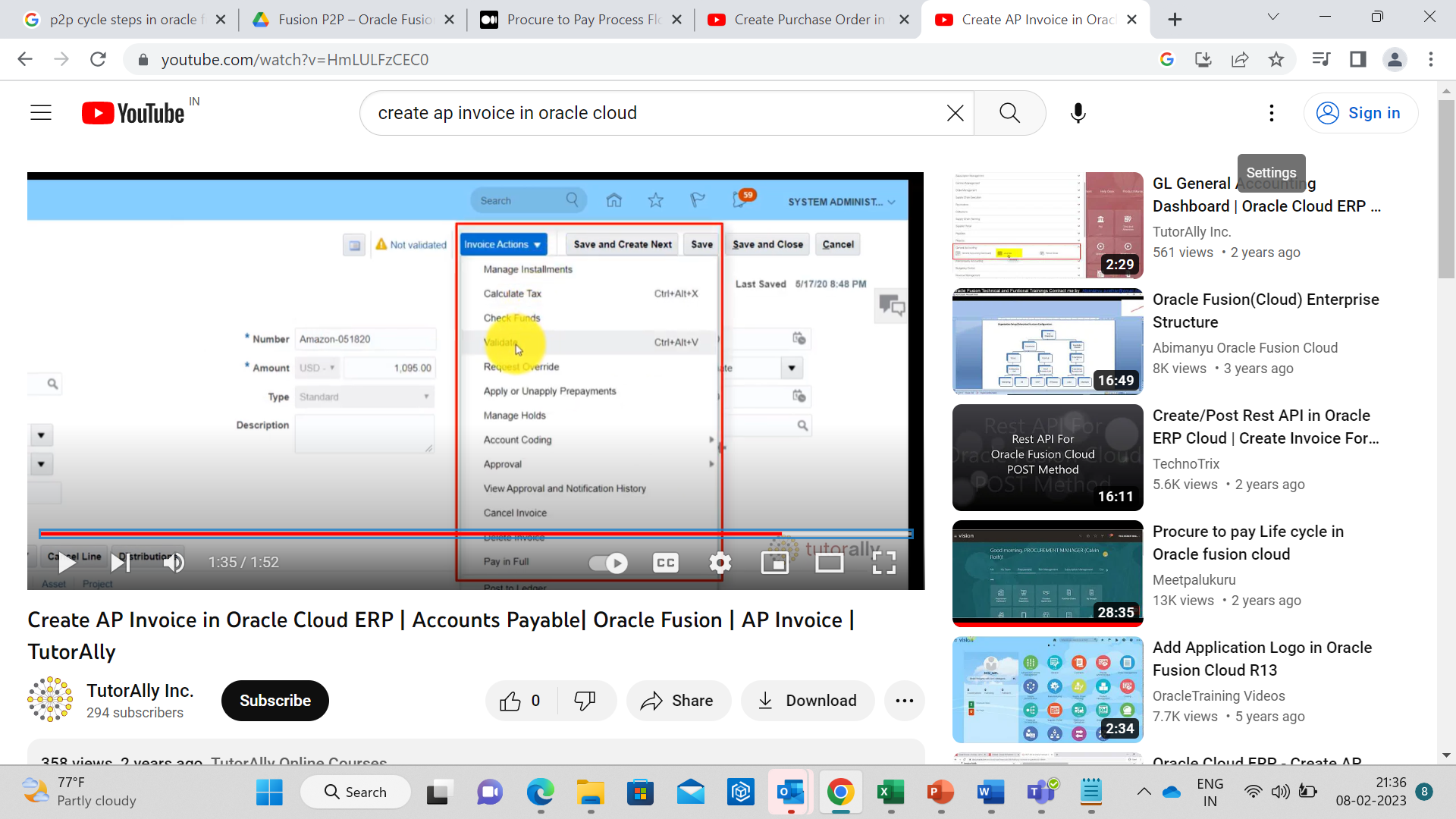
9. Making the payment
The last step in the P2P cycle in Oracle Cloud Fusion is making the payment to the supplier/vendor. The payment is made by entering the invoice and PO numbers (and/or receipt) into Oracle’s payment form.
The payment form also includes more information about the supplier, ship-to address, and delivery date. After these are entered, the payment is made and the cycle ends.
Tables involved in the P2P cycle in Oracle Cloud Fusion
The following table shows the P2P cycle in Oracle Cloud Fusion.
Type of table | What it contains |
Purchasing Requisition Header | Information of requisition number, date created, and status. |
Purchasing Requisition Lines | Unit price, item code, description, quantity, and category. |
Purchase Order Header | Order number, supplier name, and ship-to address. |
Purchase Order Lines | Item code, quantity, and unit price. |
The receipt Header | Receipt number, supplier name, and date received. |
Receipt Lines | Quantity, item code of received items, and unit price. |
Invoice Header | Invoice number, supplier name, and shipping address. |
Invoice Lines | The item code, quantity, and unit price. |
Payment Header | Information of the payment includes the payment number, supplier name, and shipping address. |
Payment Lines | Item code, quantity, and unit price. |
Common mistakes during the P2P cycle in Oracle Cloud Fusion
Common errors that can occur during the P2P process in Oracle Cloud Fusion are as follows:
- Incorrect/missing account codes
- Invalid/missing vendor information
- Inaccurate/missing purchase order information
- Invalid/missing invoice information
- Incorrect/missing payment info
If the information is incorrect/missing, it can cause significant delays and disruptions in the P2P cycle of Oracle Cloud Fusion. That’s why it is important to double-check all your data before initiating any part of the P2P cycle.
Optimal procedures for the Procure-to-Pay cycle in Oracle Cloud Fusion
It is necessary to understand the best practices followed in the Industry. Key things to keep in mind include:
- All invoices created must have an approver, regardless of amount or priority. This will ensure that all invoices are reviewed, validated, processed, and approved.
- Be sure to review and validate all invoices before approving them. This will help to avoid any errors in the approval process.
- If you have questions about invoice or process in the P2P cycle, please ask your supervisor or another experienced individual. Getting clarification can help to avoid any hassles or confusion.
By following these practices, you can help ensure that the P2P cycle in Oracle Cloud Fusion runs smoothly and efficiently.
Conclusion
The P2P cycle involves all necessary and optional processes that help ensure a smooth requisitioning and procurement of goods and services, and the accuracy of financial data in Oracle Applications.
This blog post outlined the P2P cycle in Oracle Cloud Fusion, including the accounting entries and tables. We hope you found this information to be helpful!

